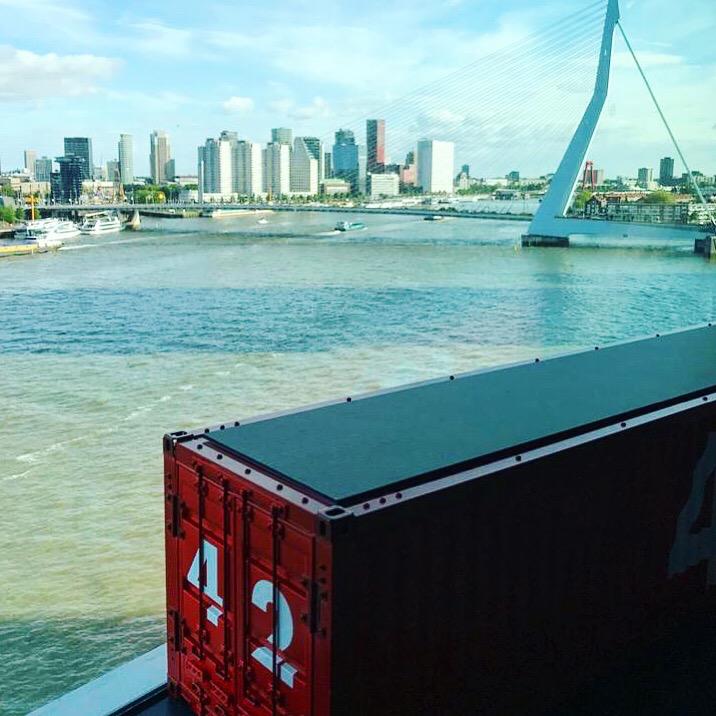A way to follow containers minute by minute on the long world journeys they take. Until now it was impossible, but the Port of Rotterdam Authority believes it has the technology with which it can be done on a large scale.
Rotterdam, May 15th 2019
Today a ship departs from the port with Container 42: a smart container that will register everything that happens on board for the next two years.
The self-sufficient container is full of all kinds of sensors, measuring equipment and solar panels. “Sensors that measure the air quality, the climate inside and outside, movement of objects in the container, sound, smell. Everything is recorded,” says inventor Erwin Rademaker of the Port Authority. “And there are several GPS systems that can measure exactly where in the world the container is.”
According to Rademaker, this technique is already used in many industries, but container logistics are lagging years behind. “Compare it to ordering a pizza nowadays. Then you know exactly when the olives go on, when the courier leaves and at what temperature the pizza arrives.” However, a container sometimes disappears from the radar for weeks after loading and unloading.
Smuggling
And that while cargo owners increasingly demand exact information, says Rademaker. “You only now know what happened to the container when you open it again. And you may not think it, but containers can still get lost. It is a very complex process. If a container has to come from Singapore to Rotterdam, at least 30 parties are involved. “
The Port Authority believes that the container project is not only interesting for tracking the cargo. It can also be a solution as a means against smuggling, for example of drugs. “Nothing can go unnoticed. When the doors are opened, an alarm is sent to our website and the camera is turned on. So we can also see who is in the container right away,” says Rademaker.
Partly because of the large amount of GPS equipment in the container, it should become easier to find out where damage occurred on the trip and who was responsible for the container at the time.
Fill in forms yourself
It is the intention that the container will also measure how much solar energy is generated while traveling. In the longer term, the Port Authority also sees opportunities for ‘smart ports’. “You can imagine that this container will talk to cranes in the future. Or that it will fill in its own customs forms, because it knows exactly where it has been and that it has not been opened.”
